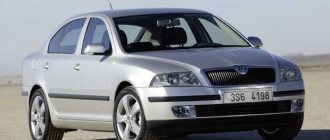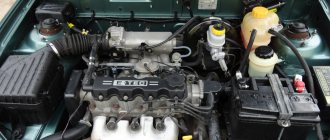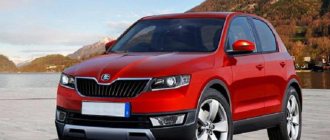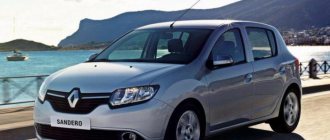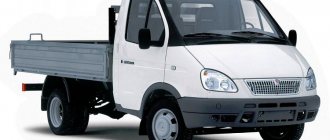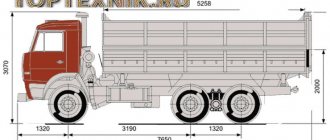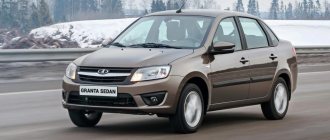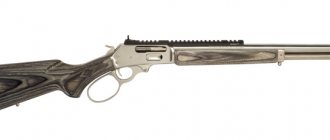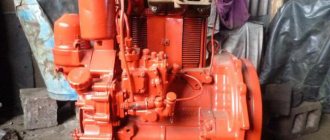Back in 1993, the Korean company Daewoo thought about creating a completely new model among mass and budget cars. Literally two years later, the first 150 test models were released, and in 1997, the Daewoo Lanos was presented at the popular European Motor Show in Geneva. From the same year, full-fledged production of these machines began. The task of the Koreans from Daewoo was to create a more comfortable and modern car based on the existing Nexia, and Toyota Tercel, Opel Astra and Volkswagen Golf were boldly considered as competitors.
Work on the car
The Koreans spent more than 400 million dollars on the development of the Lanos model - a very decent amount in those days. The design of the car was developed by specialists from the Ital Design studio, headed by the famous Italian Giorgetto Giugiaro. It was their version that won the competition out of 4 possible external types of the model due to the fact that it turned out to be very bold and unusual. The Lanos itself, a photo of which can be seen in the article, is the result of the work not only of the Daewoo research center, but also of many European giant companies in the automotive industry (Delco, Porshe, GM Powertrain, etc.). The work on the creation and development of the Lanos model included dozens of tests and trials in different parts of the world. In the UK, the new “Korean” as a concept was tested for safety, stability and reliability at high speeds and speeds. The braking system was also tested there. Russia, Canada and Sweden became a kind of testing ground for Lanos at low temperatures, and high-temperature testing took place in the USA, Italy and Spain.
Clearance
Typically, automakers set different ground clearances for different body types. In the case of Daewoo Lanos, the manufacturer set one ground clearance. The ground clearance of Daewoo Lanos is 165 mm. But be careful when going on vacation or returning with shopping: a loaded car will easily lose 2-3 centimeters of ground clearance.
Vehicle technical data.
If desired, the ground clearance of any car can be increased using spacers for shock absorbers. The car will become taller. However, it will lose its former stability at high speeds and will lose greatly in maneuverability. The ground clearance can also be reduced; for this, as a rule, it is enough to replace the standard shock absorbers with tuning ones: the handling and stability will immediately please you.
Ground clearance Daewoo Lanos restyling 2000, sedan, 1st generation, T150
Release
From 1997 to 2002, this model could be found in every automobile market, regardless of country. Those copies that were assembled in Vietnam and, accordingly, in Korea, were initially sold to Asian countries. After the need arose to expand purchases, Poland, Ukraine and Russia received official permission for assembly. Among those coming off the assembly line in the last listed countries were those cars that were exported to the north of America, the west of Europe and Australia. When production ceased, the number of sales markets decreased sharply: first in Russia, then in the Republic of Korea and then in Poland.
For the internal needs of Ukraine, cars come from the Zaporozhye plant, which exports copies to some European and Asian countries; Spare parts are coming to Egypt so that Africa can produce cars for its customers.
Mass production
The Daewoo Lanos was produced, the characteristics of which were liked by most consumers, as mentioned above, first in Korea, then production moved to Europe. For example, in Poland its assembly was carried out until 2008. With the accession of Daewoo to the General Motors concern in 2002, Lanos began to be sold under the Chevrolet brand. So, since 2004, mass production of the model began at the Zaporozhye plant in Ukraine - up to 90 thousand copies per year were distributed from there throughout the world. Since 2008, the car has entered the markets of various countries under the Daewoo, ZAZ, and Chevrolet brands.
Body
During the entire production of the model, the Daewoo Lanos line had 2 bodies, which were named T100 and T150. Their most striking difference is the updated rear optics of the new generation. The sedan body became the most popular for the Lanos model; five- and three-door hatchbacks are less common. Until 2002, a small batch of Lanos convertibles were produced. To such models the word Cabrio was added to the name. It is almost impossible to find Daewoo Lanos as a convertible in Russia; most of them went to the market in southern Europe. The Ukrainian enterprise ZAZ even produced a few commercial Lanos pickups, but such cars are now a real rarity.
Engine
Throughout its history, the car was equipped with 4 engines ranging from 1.3 to 1.6 liters, producing power from 75 to 106 horsepower. The 1.5 SOHC unit was most often installed, in the development of which German specialists from the Porshe concern also took part. This engine produces 86 hp. sec., allowing you to reach a speed of 100 km/h in 12.5 seconds. The maximum that a car with such a power unit can produce does not exceed 172 km/h.
Weaker engines with volumes of 1.3 and 1.4 liters had 75 and 77 liters each. With. respectively. These installations, not very powerful, accelerated the Lanos (photo below) to hundreds in at least 15 seconds. At the same time, they themselves were completely borrowed from Tavria. An interesting fact is that the 1.3 liter engine was initially produced with both an injector and a carburetor.
In general, all engines are quite reliable and, with proper maintenance, without any problems, overcame the 300 thousand kilometers mark without major repairs. All three units described above are equipped with an 8-valve cylinder head. The 1.6-liter (106 hp) engine has 16 valves and is structurally different from other power plants found on the Daewoo Lanos in the type of gas distribution mechanism in which there are no phase adjustments.
If we talk about consumption, then for the same 1.5-liter engine the manufacturer indicated 6.7 liters per hundred. Unfortunately, hardly any Lanos owner managed to achieve this figure - the average highway/city consumption is 8 and 10 liters. Therefore, this aspect can be attributed to the disadvantages of the machine.
How to increase ground clearance. All methods
If we are ready to accept all the disadvantages of lifting Lanos, then we will choose for ourselves the appropriate option for increasing ground clearance. Suitable both in price and in terms of the degree of influence on the design of the car.
Wheels - more
14" wheels with normal tire height
We can simply replace the wheels and tires. A size or two larger. For Lanos, such a possibility exists, but to a certain limit. If you install a rim not at 13 inches, but at 14, and install high-profile tires, the ground clearance will increase by a maximum of 15 mm. For wheel arches this will be painless. As a result, we will have a maximum ground clearance of 175 mm. But there are a few “buts” here too.
- As the outer diameter of the wheel increases, we lose the accuracy of the speedometer readings.
- The gear ratio of the main gearbox is designed for the stock diameter, therefore, we will lose traction, but gain in speed.
- If you go too far with the diameter, the wheels may rub against the wheel arches when loading or when turning.
- Fuel consumption will increase.
14 wheels on high tires
And if we talk about investments, replacing wheels and tires on a Lanos will cost a tidy sum. In this case, it is necessary to take into account the wheel bolt pattern, do not exceed the tire width and wheel offset. If we evaluate only from the point of view of the profitability of increasing the clearance, then this option is doubtful.
Spacers for suspension on Lanos
Set of spacers for Lanos
Cheap and cheerful. Sets of spacers for front struts can be purchased for any mass-produced car. It is placed between the body glass and the rack. The spacer can be made of silumin, plastic, polyurethane or aluminum. Each material has its good and not so good sides, and its choice depends on the specific requirements for the suspension.
Spacers for the A-pillar, polyurethane
Spacers for the rear suspension on Lanos are installed between the rear glass and the spring. However, it’s unlikely to be enough with just one spacer. The fact is that the rear spacer is much thicker than the front, so the range of travel of the shock absorber rod will move to the upper part. There is a danger that if the suspension is punctured, the rod may be torn out of the cup. There is only one way out - install a shock absorber extension under the lower mount.
Then the shock absorber will work as usual and nothing will threaten it. The disadvantage of this tuning is that the body lifts unevenly, which means the brake force regulator will have to be reconfigured. This is not fatal, so the option with spacers for the suspension has the right to life. As a result, we will increase the ground clearance of the Lanos to 190 - 197 mm, and this is almost a crossover.
Rear spring spacers with shock absorber extensions
Changing the springs
Selecting springs by length
Alternatively, you can replace the stock springs with springs with more coils. In this case, you will also need to install a shock absorber extension, since the body will become higher. An alternative is to buy shock absorbers with a longer stroke. Of course, replacing springs and shock absorbers can be expensive, from $250 to $500. But we love our car, right?
Characteristics of rear springs for Lanos
Making the suspension stiffer
Interturn spacers
The option is as simple as a nut. An interturn spacer is inserted into the spring, one for each spring. A reinforced spring will undoubtedly be stiffer, but such a measure may come in handy after installing spacers. It all depends on how the car behaves.
The good thing about this option is that the rolls can be leveled out and the car can regain control after lifting. The bad thing is that all the vibrations from the road are on our butt and on the body.
The shock absorber extension is also useful when replacing springs.
Transmission
From the very first day of production, Daewoo Lanos was equipped with a manual transmission with five gears. This “Lanos” transmission became famous for its reliability and very rarely gave owners trouble. Some drivers say that in their cars, a manual transmission with regular oil changes lasted more than 300 thousand kilometers without requiring any change of even one spare part. Daewoo Lanos entered the Ukrainian market in December 2011. Instances had an automatic transmission. As with the mechanics, there are few complaints about the automatic transmission. This box supports all the necessary functions: engine braking, low gears and even sports mode.
The ground clearance declared by the manufacturer for the Daewoo Lanos is 150 mm, which, let’s say, is not the best in the class. Therefore, installing crankcase and gearbox protection was the first necessity after purchasing a car. Driving on light off-road or muddy roads is the weak point of the Daewoo Lanos series models.
What is clearance and how to measure it
According to the book with the inscription “GOST”, ground clearance is the distance from the plane to the lowest point of the car. It seems that everything is simple. But it was not there. In recent years, ground clearance has become a highly sought-after characteristic even on new cars. Therefore, abroad it is measured somewhat differently.
Measuring clearance according to European standards and according to USSR standards
This simple diagram clearly shows how different the methodology for measuring ground clearance is between us and the sharks of capitalism. Sharks are cunning. Because behind this seemingly honest arc are hidden those very millimeters that we miss in real life. For example, an exhaust pipe resonator sticking out from the side, a transfer case hidden on the side, suspension elements, crankcase and underbody protection always reduce the actual ground clearance by about 20-30%.
Bottom line
In conclusion, after analyzing many tests and characteristics from automobile magazines and owners, we can say that the advantages of the Lanos model (reviews confirm these facts) include good suspension performance and its reliability, low cost of the car, and optimal price-quality ratio. The disadvantages are high fuel consumption in the city, low ground clearance and a small interior, where rear seat passengers are especially cramped. Daewoo Lanos belongs to the budget segment, where each representative has many pros and cons. Another thing is important - this model, unlike other representatives of this class, has a rich history and great popularity.
Method No. 2: Reinforced springs
The second method is to replace the springs with reinforced ones. Reinforced springs differ from ordinary springs in having a larger diameter of the rod (by about 1-2 mm), as well as in the fact that this diameter of the rod is constant along the entire length (for standard springs, this diameter tapers towards the edges).
In other words, these are springs with increased rigidity. After installing them, the car will become stiffer, but now you can safely seat 3 people (+ trunk) in the back seat and not be afraid that the mudguards will come off. But when you drive alone, every bump will be felt.
